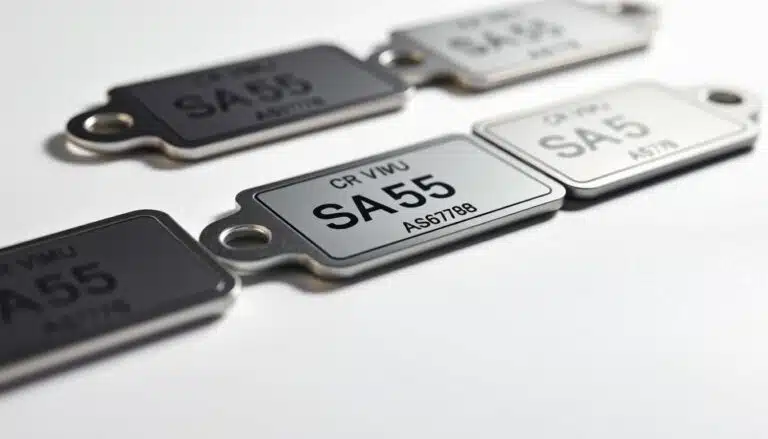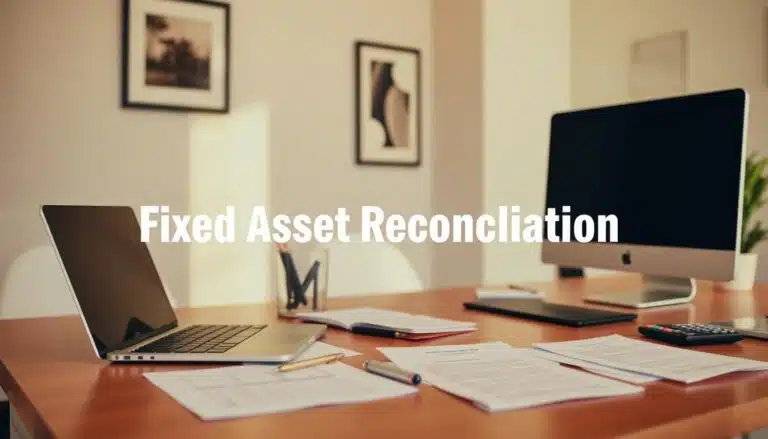International Accounting Standard 16 (IAS 16) plays a crucial role in establishing consistent and transparent reporting practices for property, plant, and equipment (PP&E) across various organizations. Compliance with IAS 16 ensures that these tangible assets are recognized, measured, and disclosed appropriately in financial statements.
This article serves as a comprehensive guide to understanding and implementing IAS 16 to effectively comply with its requirements.
Table of Contents
ToggleDiscussion
What Is IAS 16?
IAS 16 refers to the International Accounting Standard 16, titled “Property, Plant and Equipment.” It is an accounting standard issued by the International Accounting Standards Board (IASB) that provides guidance on the recognition, measurement, presentation, and disclosure of property, plant, and equipment.
IAS 16 applies to all entities that prepare financial statements in accordance with International Financial Reporting Standards (IFRS). The standard defines property, plant, and equipment as tangible assets held for use in the production or supply of goods or services, for rental to others, or for administrative purposes.
What would be the key provisions of IAS 16?
- Recognition and Initial Measurement: Property, plant, and equipment are initially recognized at cost, in cluding directly attributable costs to bring the asset to its intended use. The cost of an asset includes purchase price, import duties, and any directly attributable costs.
- Subsequent Measurement: After initial recognition, property, plant, and equipment are generally measured at cost less accumulated depreciation and impairment losses. Alternatively, entities may choose to measure assets at fair value if certain criteria are met.
- Depreciation: IAS 16 requires entities to systematically allocate the depreciable amount of an asset over its useful life. The standard provides guidance on selecting an appropriate depreciation method, estimating useful life, and reviewing depreciation rates regularly.
- Revaluation Model: Under IAS 16, entities have the option to revalue property, plant, and equipment to fair value. If the revaluation model is chosen, assets are measured at fair value less subsequent accumulated depreciation and impairment losses.
- Disclosures: IAS 16 mandates specific disclosures related to property, plant, and equipment. This includes information about measurement bases, depreciation methods, useful lives, and any restrictions on the title or use of assets.
What are the entities that must comply with IAS 16?
Entities that must comply with IAS 16 are those that prepare financial statements in accordance with International Financial Reporting Standards (IFRS). This includes various types of organizations, such as publicly traded companies, private companies, non-profit organizations, and government entities, that choose to adopt IFRS for their financial reporting.
The scope of IAS 16 applies to all entities that hold property, plant, and equipment as defined by the standard. These assets are tangible items that are held for use in the production or supply of goods or services, for rental to others, or for administrative purposes. Therefore, any entity that owns and uses tangible assets aspart of its operations must comply with IAS 16 in recognizing, measuring, presenting, and disclosing property, plant, and equipment in their financial statements.
It’s important to note that some entities may be subject to local or national accounting standards that differ from IFRS. However, if an entity chooses to adopt IFRS for its financial reporting, it must comply with all applicable IFRS standards, including IAS 16, to ensure consistency and comparability in financial reporting across different jurisdictions.
What disclosures are required under IAS 16?
Under IAS 16 (International Accounting Standard 16) – Property, Plant and Equipment, several disclosures are required to provide relevant information about an entity’s property, plant, and equipment in its financial statements. These disclosures include:
- Measurement Bases: Entities must disclose the measurement bases used for property, plant, and equipment. This includes specifying whether assets are measured at cost less accumulated depreciation and impairment losses or at fair value.
- Depreciation Methods: The depreciation methods employed for each significant category of assets should be disclosed. This involves providing information on the useful lives or depreciation rates used, any residual values, and the depreciation method applied (e.g., straight-line, reducing balance).
- Revaluation Model: If an entity chooses to revalue its property, plant, and equipment under the revaluation model, the policy adopted for revaluations must be disclosed. This includes details on the frequency of revaluations, the methods used to determine fair value, and any resulting revaluation surplus or deficit.
- Significant Restrictions: Disclosures are required for any significant restrictions on title or the right to use property, plant, and equipment. This involves describing the nature and extent of these restrictions and their impact on the entity’s operations.
- Subsequent Expenditures: Information should be provided about significant expenditures incurred subsequent to the initial recognition of assets. This includes details on the nature of the expenditures, the timing of their incurrence, and their impact on the carrying amount of the assets.
- Impairment: When an asset is impaired, entities must disclose the events or circumstances that led to the impairment, the amount of impairment loss recognized, and its impact on the carrying amount of the asset.
- Disposals: Details of any disposals of property, plant, and equipment during the reporting period should be disclosed. This includes the gain or loss recognized on disposal, as well as any significant terms and conditions associated with the disposals.
These are some of the key disclosures required under IAS 16. The aim is to provide users of financial statements with relevant and reliable information about an entity’s property, plant, and equipment, allowing them to understand the nature, carrying amounts, and changes in these assets over time.
What is the revaluation model and when can it be used?
The revaluation model is an option under IAS 16 that allows entities to measure property, plant, and equipment at fair value. It can be used when there is an active market for the asset and reliable valuation methods are available. Regular revaluations are necessary to keep the carrying amount in line with fair value.
How are the assets recognized unde the revaluation model?
Under the revaluation model, assets are initially recognized at cost and can be subsequently revalued. Increases in value are recorded as a revaluation surplus, while decreases are recognized as impairment losses. The revaluation model is optional and must be applied to an entire class of assets or specific individual assets.
Entities using the revaluation model must disclose their revaluation policy, including the frequency of revaluations, valuation methods used, and any resulting surplus or deficit.
It’s essential to consult IAS 16 and seek professional accounting advice for accurate application of the revaluation model in accordance with accounting standards.
How should impairment of property, plant, and equipment be assessed and recognized?
Impairment of property, plant, and equipment is assessed and recognized following the guidelines of IAS 36. Here’s a summarized process:
- Assessment: Regularly assess if there are any indicators of impairment for the assets. These indicators may include changes in market value, physical damage, technological obsolescence, or declining cash flows.
- Recoverable Amount: Determine the asset’s recoverable amount, which is the higher of its fair value less costs to sell and its value in use. Fair value can be determined through market prices or valuation techniques, while value in use is the present value of expected future cash flows.
- Impairment Loss: If the carrying amount exceeds the recoverable amount, recognize an impairment loss. Calculate the loss as the difference between carrying amount and recoverable amount. It is recognized in the income statement, except for revalued assets, where it is recorded as a decrease in the revaluation surplus.
- Reversal: If an impairment loss no longer exists or decreases in subsequent periods, a reversal is allowed but only to the extent that the carrying amount doesn’t exceed what it would have been without the impairment loss.
Regular impairment testing, based on reasonable information, is crucial. Follow IAS 36 for accurate assessment and recognition of impairment, ensuring transparency in financial reporting. Consult the standard and seek professional accounting advice for specific guidance.
What are the challenges organizations may face in implementing IAS 16?
Complying with IAS 16 may pose certain challenges, such as determining appropriate useful lives, estimating fair values, and conducting impairment tests accurately. However, organizations can overcome these challenges by following best practices:
Maintain comprehensive records
Keep detailed records of each PP&E item, including acquisition costs, subsequent expenditures, and relevant documentation supporting revaluations or impairment assessments.
Regularly review useful lives and residual values
Conduct periodic assessments to ensure that the estimated useful lives and residual values of assets remain appropriate and reflect economic realities.
Stay updated with changes
Monitor updates and amendments to IAS 16 and other related accounting standards to stay current with evolving requirements and best practices.
Conclusion
IAS 16 Property, Plant and Equipment With CPCON
Accounting for Property, Plant and Equipment under IAS 16 can get tricky when you need to review useful lives and residual values of assets. This puts more regulatory pressure on your business accounting practices. However, IAS 16 fair value measurement outlines a clear path for accounting for PPE assets (a.k.a, “fixed assets”).
Our team of experts has extensive experience in establishing consistent and transparent reporting practices for Property, Plant and Equipment across various organizations. We can guide you through the valuation and accounting process. This can help you maximize value for your organization while remaining compliant with the latest regulations.
Contact us today to learn more.

























